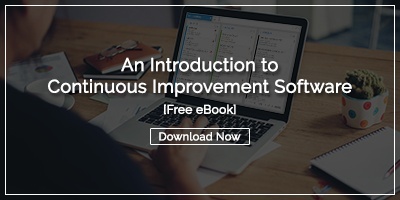 Of course you can do a rapid improvement event without any software support. You can also walk the 20 miles to work and send memos via carrier pigeon. You can also light your house with candles and warm it with fires. You can do lots of things without utilizing the available technology, but the question is...why would you want to?
Of course you can do a rapid improvement event without any software support. You can also walk the 20 miles to work and send memos via carrier pigeon. You can also light your house with candles and warm it with fires. You can do lots of things without utilizing the available technology, but the question is...why would you want to?
A better question, one that actually deserves a conversation is; should you do a rapid improvement event without software.
The answers to these 3 questions might help you decide.
What are you trying to accomplish?
Set aside the specific goals of any one particular event for a minute, and examine the bigger picture related to improvement events. Think about why you do them. Do you hope to achieve lasting change or are you looking for a quick fix? If what you are after is improvement that will last and have a big impact on the organization, then it doesn’t make too much sense to conduct your event without software.
With software designed to support improvement, you’ll have a complete record of all of the decisions and ideas discussed during the event. All of the related documents will be available for any stakeholder to review. The current state analysis, event goals, and final outcomes can be shared with everyone in the organization. Without technical support, activities, documents, and decisions will be scattered about in email chains and stored on personal PCs, making the context of the event undecipherable and debatable.
If you want long-term knowledge that outlives the event and spreads beyond the initial context, you need improvement software.
How will you measure success?
At the outset of your rapid improvement event, you’ll want to define its goals and determine what success looks like. It is usually fairly easy, with or without software, to decide if your event achieved its immediate aims, but what about the results over time? Some improvements take a while to yield any measurable results at all. Others result in cost or productivity savings that recur month after month. With the right software, it is easy to calculate the impact of improvement for months, even years after an improvement blitz.
Who is going to be involved?
Teams that are used to working closely together often have very good communication habits and can get a lot done as a group. However, rapid improvement events often involve cross-functional team members that have different communication styles and preferences. This causes discord and slows down the pace of improvement, a deadly sin during rapid improvement events. Improvement software provides a common space for collaborative work and defines a unified language. Everyone gets easily on the same page and enjoys smooth sailing.
So sure, you can do a rapid improvement event without software…unless you want lasting improvement, long-term measurement of results, and cross-functional collaboration. In that case, it makes sense to find a platform that will support your efforts. Look for a solution that will capture all of the activities associated with the event, provide notifications and alerts for quick action, make it easy for team leaders to identify roadblocks, and calculate the impact of the event over the long run. You’ll be glad you did.
Learn more about improvement software in this free eBook.



Add a Comment